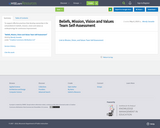
To support effective practices that develop ownership in the school/district’s beliefs, mission, vision and values as underpinnings for continuous improvement.
- Subject:
- Education
- Material Type:
- Other
- Self Assessment
- Date Added:
- 05/08/2018

To support effective practices that develop ownership in the school/district’s beliefs, mission, vision and values as underpinnings for continuous improvement.
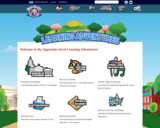
This website provides brief informational articles about the US government for young citizens around the ages of 4-8. Articles include information about the following topics:
1. Branches of Government
2. How Laws are Made
3. Symbols, Songs, and Structures
4. The Election Process
5. Historical Documents
6. Federal vs. State Government
7. Federally Recognized Tribes
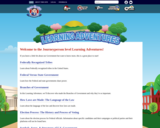
This website provides brief informational articles about the US government for young citizens between the ages of 9-13. Articles include information about the following topics:
1. Branches of Government
2. How Laws are Made
3. Symbols, Songs, and Structures
4. The Election Process
5. Historical Documents
6. Federal vs. State Government
7. Federally Recognized Tribes

A research brief, in which the last section goes into great detail about the value of school and parent/community collaboration is vital for success in a personalized learning environment.
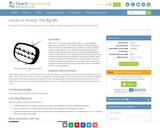
Momentum is not only a physical principle; it is a psychological phenomenon. Students learn how the "Big Mo" of the bandwagon effect contributes to the development of fads and manias, and how modern technology and mass media accelerate and intensify the effect. Students develop media literacy and critical thinking skills to analyze trends and determine the extent to which their decisions may be influenced by those who manipulate a few opinion leaders. Note: The literacy activities for the Mechanics unit are based on physical themes that have broad application to our experience in the world â concepts of rhythm, balance, spin, gravity, levity, inertia, momentum, friction, stress and tension.
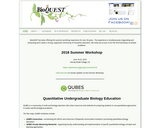
This peer-reviewed publication contains over 70 MAC and PC tools, simulations, databases, and other resources developed for undergraduate biology.

This page, presented by MIT and made available online via the university's Open Courseware site, presents a series of materials on biological engineering. Topics include introduction to biological engineering design, systems microbiology, computation for biological engineers and molecular principles of biomaterials. Materials are at both the undergraduate and graduate school levels. OpenCourseWare is free educational material online. Video lectures, assignments and exams are included. No registration or enrollment is required to use the materials.
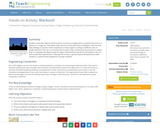
Students read news reports and first-person accounts to imagine what it would be like to be in a blackout in a large city. They follow news reports as if the event were unfolding in real-time and keep weblogs or journals of their experience as they imagine it, taking on different roles of people who live in the city or commute there to work. They use their journal accounts to create a play or screenplay that depicts what the August 2003 blackout was like for the people in the U.S. and Canada who experienced it. Although this activity is geared towards fifth-grade and older students, it could be easily adapted for younger students.

PDF version of a customizable computer science needs assessment that can be used to gather data from one or more districts.
The live Google Form version can be found here: https://docs.google.com/forms/d/e/1FAIpQLSfdSe7LQLNt5L4LykzgWb0PNwjWfAo7CLs82kUhPSeDGLPj3Q/viewform
Please contact CESA 11 if you would like an editable Google Form version.
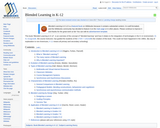
This book,"Blended Learning in K-12", is an overview of the concept of "blended learning" and how it relates to the integration of technologies in the K-12 environment. Dr. N.I. Scagnoli, the course instructor, has guided the students of the CTER 7 cohort in the creation of this book. This could not have happened in the 1980s. (By way of explanation to non-Americans, K-12 means all primary and secondary schooling).

Students will make a proportional model of blood out of red gelatin, a plastic bag, and rice. They will learn about the different components that make up blood and will investigate what happens when the arteries and veins experience buildup from cholesterol. They will then work in pairs to brainstorm ways to clean our clogged arteries.
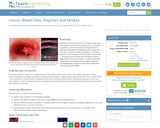
Students are introduced to the circulatory system with an emphasis on the blood clotting process, including coagulation and the formation and degradation of polymers through their underlying atomic properties. They learn about the medical emergency of strokes the loss of brain function commonly due to blood clots including various causes and the different effects depending on the brain location, as well as blood clot removal devices designed by biomedical engineers.
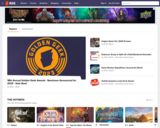
What is BoardGameGeek?
- BoardGameGeek is an online resource and community that aims to be the definitive source for board game and card game content. The site is updated on a real-time basis by its large and still growing user base — more than two million registered users! — making the Geek the largest and most up-to-date place to get gaming information! You can become a registered member of BGG for free, although we welcome your contributions to the site in the form of ratings, reviews, and thoughts on games to the existing database!
BGG features reviews, ratings, images, play-aids, translations, and session reports from board game geeks around the world, as well as live discussion forums. In addition, every day nearly a hundred game trades pass through the hands of registered members, as well as transactions in the Geek Market. If you are new to the site and are wondering where to begin, you might start with the Guide to BoardGameGeek.
What kind of games are here?
- Here you'll find many types of board games, including thousands you've probably never seen in a store! We cover not only board games but also dice games, card games, tile-laying games, and games of dexterity. We have abstracts, economic games, dungeon crawls, city building, diplomacy and negotiation, trading, puzzle games, strategy games, party games, war games, and many more. We run the gamut from the light and whimsical Carcassonne to the serious and heavy empire-building of Twilight Imperium: Fourth Edition. Well-known games like Monopoly exist in the database as well, although you'll find almost all users prefer modern games that exhibit advancements in game play and component quality since Monopoly was first published.
For game suggestions, especially if you are buying a game for someone else, check out our 2019 Board Game Gift Guide.
This looks interesting, but where can I find these games?
- Many of these games are sold by other BGG users here in our Geek Market. Games that are in print may also be available from your local independent game store, which should be happy to special order titles for you. If you can't find the games there, you might try an online game retailer, which is often the only way to obtain imported games. Although you may never have seen or even heard of many of these games, you will find that they are surprisingly easy to obtain.
How can I find opponents for these games?
- Start by reaching out to your friends or family — you have the makings of a great gaming group among people you already know! But there are also many ways to meet new people for playing these games. You might be lucky and have a game store that features board game nights, and you may even find the local nexus of board gamers in your community. Meeting up for game nights is an excellent way to try out many games. You might also find a local group in the Game Groups section of our Forum, or use our Forum to try to find people in your area. Our members are always looking for new players, and generally enjoy introducing people to these games. BoardGameGeek even facilitates finding individual gamers in your area by the Gamer Database.
Why should I register?
- To fully use many of the site's features, you'll need a username. BGG registration is free. To add any content to the site, you must register. After you register you can:
- Add a game to the database
- Contribute images to our database
- Post messages on our forums

In this online game, learners test their knowledge of human anatomy. Learners are presented a mystery image of a body part and use their mouse to select the proper body part from a full size anatomical model (known as "Jerome"). Learners try to match all 10 body parts correctly. Use this activity to review human anatomy and/or introduce learners to the use of anatomical models.
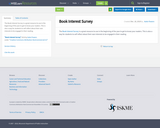
The Book Interest Survey is a great resource to use in the beginning of the year to get to know your readers. This is also a way for students to self reflect about their own interests to be engaged in their reading.
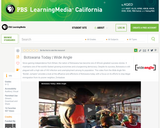
Learn about the achievements and national problems of the African nation of Botswana in this video segment from Wide Angle.
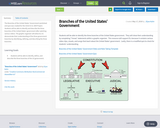
The Branches of the United States' Government worksheet and quiz was created for the CESA #1 EL OER Project. Students will be able to identify and describe the three branches of the United States' government after watching various videos. The graphic organizer will allow ELs to demonstrate their understanding of the three government branches by identifying, defining, and describing the three branches.
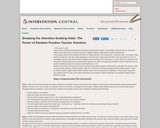
Some students misbehave because they are trying to attract teacher attention. Surprisingly, many students who value adult attention don't really care if it is positive (praise) or negative attention (reprimands)--they just want attention!
Unfortunately, instructors with students who thrive on teacher attention can easily fall into a 'reprimand trap.' The scenario might unfold much like this: First, the student misbehaves. Then the teacher approaches the student and reprimands him or her for misbehaving. Because the student finds the negative teacher attention to be reinforcing, he or she continues to misbehave-and the teacher naturally responds by reprimanding the student more often! An escalating, predictable cycle is established, with the student repeatedly acting-out and teacher reprimanding him or her.
Teachers can break out of this cycle, though, by using 'random positive attention' with students. Essentially, the instructor starts to ignore student attention-seeking behaviors, while at the same time 'randomly' giving the student positive attention. That is, the student receives regular positive teacher attention but at times unconnected to misbehavior. So the student still gets the adult attention that he or she craves. More importantly, the link between student misbehavior and resulting negative teacher attention is broken.
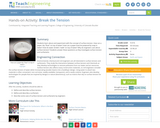
Students learn about and experiment with the concept of surface tension. How can a paper clip "float" on top of water? How can a paper boat be powered by soap in water? How do water striders "walk" on top of water? Why do engineers care about surface tension? Students answer these questions as they investigate surface tension and surfactants.

A fifth-grade teacher at Goodrich Elementary School in the Milwaukee Public Schools reflects on his previous dissatisfaction with traditional teaching methods and the effect that personalized learning has had on student performance and behavior. In the video educators and learners describe meeting each learner where they are and using their knowledge as a resources.